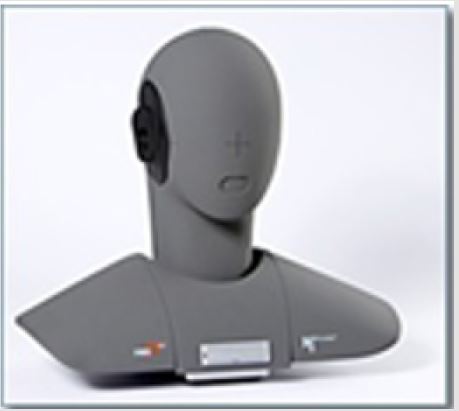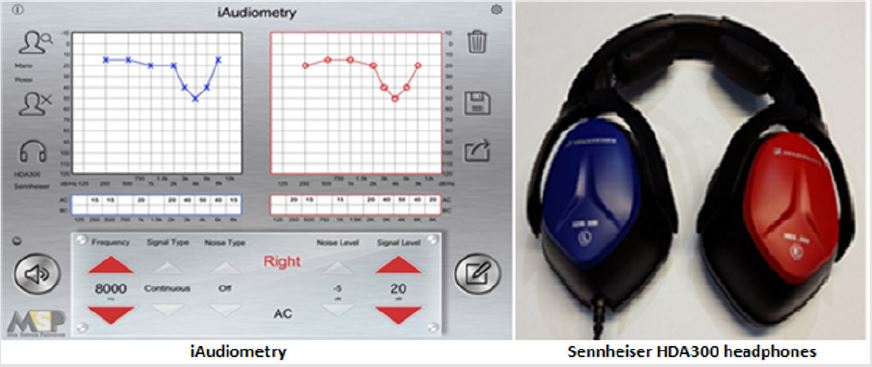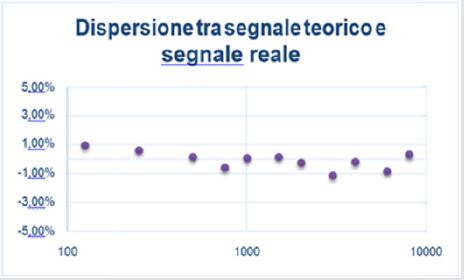Abstract
The recent development of communication technologies, such as smartphones and tablets, has paved the way for the implementation of applications, by exploiting the potential of devices, making it possible to combine expensive instruments, which until recently were only very effective tools, but certainly less expensive. This is a tool that can be used to replace a medical device such as an audiometer demonstrates just what has just been said. The iAudiometry application development project is born of the union of three different disciplines, applied acoustics, computer programmer and medicine. The following characteristics are based on their skills. Precision comparable to professional equipment of the same type; very low cost compared to traditional instruments; Possibility of use in any place thanks to the portability of the device - Tool open to continuous updates and improvements. The main trigger for hearing loss is age. Over the years, in fact, the hearing ability is reduced in all people due to the attrition of the hair cells placed in the inner ear, so it is completely normal to suffer from a form of hearing loss called presbycusis.
Introduction
The recent development of communication technologies,
such as smartphones and tablets, has paved the way for the
implementation of applications, by exploiting the potential of
devices, making it possible to combine expensive instruments,
which until recently were only very effective tools, but certainly
less expensive. This is a tool that can be used to replace a medical
device such as an audiometer demonstrates just what has just been
said. The iAudiometry application development project is born of
the union of three different disciplines, applied acoustics, computer
programmer and medicine. The following characteristics are based
on their skills. Precision comparable to professional equipment of
the same type; very low cost compared to traditional instruments;
Possibility of use in any place thanks to the portability of the device
- Tool open to continuous updates and improvements. The main
trigger for hearing loss is age. Over the years, in fact, the hearing
ability is reduced in all people due to the attrition of the hair cells
placed in the inner ear, so it is completely normal to suffer from a
form of hearing loss called presbycusis.
Among the etiological factors, the most widespread in adults,
besides aging, is occupational risk. Prolonged exposure to noise
at high intensities in the workplace over time can cause adverse
health effects, including permanent impairment of hearing or
noise-induced hearing loss; tinnitus, the continuous perception
over time of an abnormal noise, perceived in one or both ears, in the
absence of an external sound. Finally, it should be remembered that
other external phenomena can participate in aggravating hearing
damage, between these high levels of stress and anxiety that
interrupt the normal pattern of cortisol plasma levels in healthy
subjects, resulting in a significant reduction in cardio-vascular
parameters [1], which can cause damage to the inner ear.
Hearing loss due to exposure to noise can also be aggravated by
the usual use of various drugs or chemical compounds that often
share the same ototoxic mechanisms of noise. However, there is
great variability in the individual’s response to a given xenobiotic
that depends on a complex interaction between endogenous and
exogenous factors [2]. To prevent damage, the competent doctor
establishes health protocols that provide screening tests to be
performed on all workers of the same homogeneous group and
diagnostic investigations to be carried out on symptomatic workers.
Complementary health checks must be aimed at the functional
exploration of the organs specifically exposed to the risk factor [3].
In the case of workers exposed to the risk of noise, these will be
subjected to a liminal tonal audiometry, a first level examination
to identify the onset of symmetrical bilateral sensorineural hearing loss; it is characterized by a particular audiometric tracing, which
makes it possible to distinguish it from other ear pathologies,
often the execution of this examination involves considerable
difficulties in being able to transport and use diagnostic tools in the
workplace, as more and more often the medicine of modern labor
requires. Hearing loss is a disease that can depend on multiple
causes, including advanced age, heredity, high intensity noise
exposure, drug use, alcohol, smoking and stress [4]. Among the
etiological factors, the most widespread in adults, besides aging, is
occupational risk. Prolonged exposure to noise at high intensities in
the workplace over time can cause adverse health effects, including
permanent impairment of hearing or noise-induced hearing loss;
tinnitus, the continuous perception over time of an abnormal noise,
perceived in one or both ears, in the absence of an external sound.
Targets
The court examined 68 normoacusic subjects and a further group of 22 construction workers with hearing loss from both noise and presbycusis, the data obtained were subsequently analyzed using the statistical method [5].
Materials and Methods
This work was performed in April 2019, dividing it into two distinct phases. The reliability and stability of the iAudiometry app was first verified by analyzing the signal generated, calibrated using precision instruments classified in class 1 according to the IEC651 standards, such as: (Figures 1 & 2). This instrumentation allows to have a precision in the acquisition of the signal equal to +/- 0.7 dB. In order to ensure greater precision, it was also decided to perform separate calibrations for the right and left pavilion. These tests were carried out for continuous periods of 120 minutes, in order to verify the constancy of the emitted signal even after prolonged use of the device. Subsequently, a single blind study was conducted, comparing the tonal audiometry in comparative terms in which the analyzed subjects did not know the source of the sound [6-10]. The court examined was composed of a group of 68 normoacusic subjects and a further group of 22 subjects with hearing loss from both noise and presbycusis, the data obtained were subsequently analyzed using the statistical method. The audiometry was performed on the same subject twice, at a distance of 30 minutes between the two exams, using a conventional audiometer of the brand OSCILLA model SM 910, and our app with professional headphones Sennheiser HDA300, loaded on ipad pro year of production 2018 (Figure 3). Finally, it was established that all the subjects participating in the study did not present any diseases affecting the auditory system, the airways, and that they had observed an acoustic rest period from sources of noise for at least 18 hours [11,12].
Results
The results obtained highlight the following:
1) Between the theoretical signal and the real signal, a
dispersion of more than the percentage point was not detected
(Figure 4).
2) The differences observed between the values entered in
the calibration matrix and the measured values are statistically
not relevant (Table 1).
3) The hearing threshold averages, at the different
audiometry frequencies, performed on the group of
normoacusic subjects showed a difference of +/- 2 dB (Table 2).
4) The averages of hearing thresholds at the different
frequencies of audiometries performed on the group of hearingimpaired
subjects (Table 3) [13-15].
Figure 4: Percentage comparison between the value of theoretical signals and values generated by iAudiometry and Professional Sennheiser HDA 300 headphone.
Table 1: Differences between values entered in the calibration matrix and values measured with Sennheiser HDA300 headphones.
Conclusion
It is well known that tonal audiometry, an examination of the
auditory capacity performed by means of an electrical apparatus
called an audiometer, allows us to assess the auditory threshold,
that is the minimum perceivable intensity for sounds of various
frequencies, in a simple and correct manner, at least at first
pre-diagnosis. The patient in question is offered different sine
frequency electronic waves through headphones, bone conduction
headphones and loudspeakers. The objective of our study was to
evaluate the functionality of our iAudiometry application, a very
simple and intuitive system for performing audiometric screening,
with extreme versatility and portability, being loadable on devices
marketed by Apple under the name of Ipad. We verified its accuracy
and reliability both through the use of precision instruments such
as an analyzer sound level meter in class 1 sinus soundbook and a
head acoustic acoustic head, as well as performing a clinical study
in single blind to verify the reliability of the audiometries obtained.
The results showed us how, at the end of the design and
implementation process, iAudiometry was a comparable application
for the audiological sector to conventional audiometers; showing
no statistically significant difference, for the normal frequencies
used, during the execution of the audiometric examination. Even
the prolonged and continuous use of the application has not shown
any alteration in the calibration and in the intensity of the sound
emitted. In conclusion, iAudiometry can be used as a screening
tool for hearing impairments, in the same way as any conventional
audiometer on the market, with a portability and a considerable
economic advantage.
References
- Martines F, Sireci F, Cannizzaro E, Costanzo R, Martines E, et al. (2015) Clinical observations and risk factors for tinnitus in a Sicilian cohort. Eur Arch Otorhinolaryngol 272(10): 2719-2729.
- Leonardo Soleo, Emanuele Cannizzaro, Piero Lovreglio, Basso A, D’Errico MN, et al. (2013) Protocols for the health surveillance of fisherman. Italian Journal of Occupational Medicine and Ergonomics 35(4): 222-226.
- Mucia M, Salvago P, Brancato A, Cannizzaro C, Cannizzaro E, et al. (2015) Upper Respiratory Tract Infections in Children: From Case History to Management. Acta Medica Mediterranea 31: 419.
- Cannizzaro E, Ramaci T, Cirrincione L, Fulvio Plescia (2019) Work-related stress, physio-pathological mechanisms, and the influence of environmental genetic factors. International Journal of Environmental Research and Public Health 16(20): 4031.
- Cannizzaro E, Cannizzaro C, Plescia F, Francesco M, Leonardo S, et al. (2014) Exposure to ototoxic agents and hearing loss: A review of current knowledge. Hearing Balance and Communication 12(4): 166-175.
- Martines F, Sireci F, Cannizzaro E, Costanzo R, Martines E, et al. (2015) Clinical observations and risk factors for tinnitus in a Sicilian cohort. Eur Arch Otorhinolaryngol 272(10): 2719-2729.
- Cavallaro A, Martines F, Cannizzaro C, Gianluca L, Anna B, et al. (2016) Role of cannabinoids in the treatment of tinnitus. Acta Medica Mediterr 32(4): 903-909.
- Ballacchino A, Salvago P, Cannizzaro E, Robert A, Maurizio Di M, et al. (2015) Association Between Sleep-Disordered Breathing and Hearing Disorders: Clinical Observation in Sicilian Patients. Acta Medica Mediterranea 31: 607.
- Cannizzaro E, Cannizzaro C, Martorana D, Moscadini S, Daniele Lo C (2012) Effects of shift work on cardiovascular activity, serum cortisol and white blood cell count in a group of Italian fishermen. EuroMediterranean Biomedical Journal 2012(3): 109-113.
- Cannizzaro E, Plescia F, Cirrincione L, Lo Pinto E, Plescia F (2018) Sport for job. Differences in cortisol levels in a water polo team at different times of workout. EuroMediterranean Biomedical Journal 13(41): 181-184.
- Plescia F, Cannizzaro C, Brancato A (2016) Emerging Pharmacological Treatments of Tinnitus. Otolaryngology Research Advaces. Tinnutus - Epidemiology, Causes and Emerging Therapeutic Treatments. NOVA Biomedical.
- Beck RM, Ramos BF, Grasel SS, Ramos HF, Moraes MF, et al. (2014) Comparative study between pure tone audiometry and auditory steady-state responses in normal hearing subjects. Brazilian Journal of Otorhinolaryngology 80(1): 35-40.
- Jung EK, Choi YM, Kim EJ, Lee S, Cho HH (2019) Development of sound field audiometry system for small audiometric booths and comparison of its equivalence with traditional system. Clinical and Experimental Otorhinolaryngology.
- Thoidis I, Vrysis L, Markou K, Papanikolaou G (2019) Development and evaluation of a tablet-based diagnostic audiometer. Int J Audiol 58(8): 476-483.
- Corry M, Sanders M, Searchfield GD (2017) The accuracy and reliability of an app-based audiometer using consumer headphones: pure tone audiometry in a normal hearing group. Int J Audiol 56(9): 706-710.

 Research Article
Research Article






